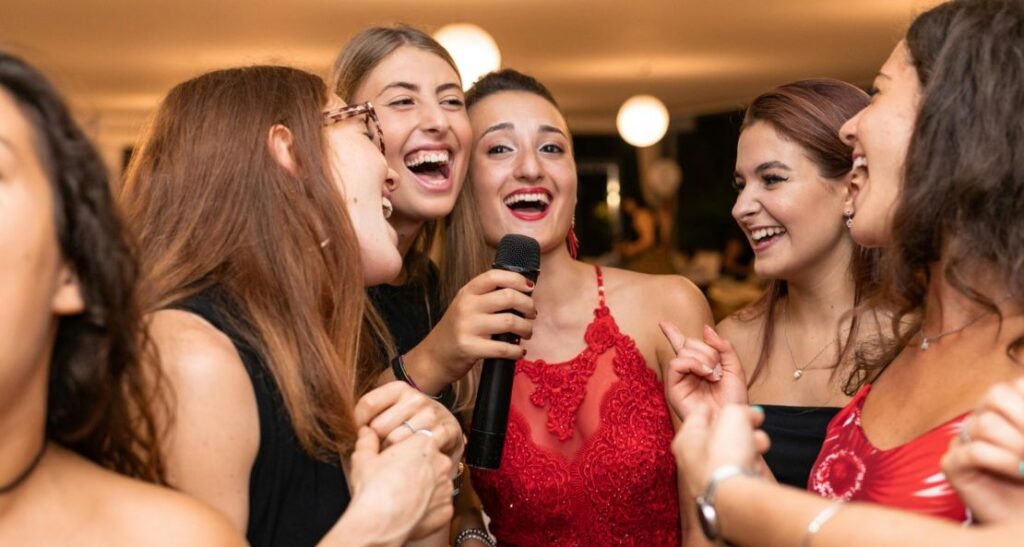You’ve probably heard someone say, “Be there or be square!” It might have been your friend hyping up their birthday bash or a quirky tagline for a retro-themed party.
But what does it mean, and why does it sound so geometrically insulting?
What Does ‘Be There or Be Square’ Mean?
This phrase is less about geometry and more about social savvy. Saying “be there or be square” is a light-hearted way of urging someone to attend an event.
Essentially, it translates to: “Show up if you want to be part of the fun.”
In this context, square isn’t about literal shapes; it’s slang for someone boring, old-fashioned, or rigid.
While not a harsh insult, it’s definitely not a compliment either. The phrase is playful, teasing, and often used among friends.
Why Is It ‘Square’?
Here’s where wordplay meets cultural history. The phrase cleverly implies that if you’re not “a-round” (present), then you’re square.
Beyond the pun, square in the 1940s was jazz slang for someone who didn’t appreciate the free-spirited and countercultural vibe of the genre.
Jazz was rebellious, unpredictable, and cool—everything a “square” wasn’t.
Before this slang emerged, square had positive connotations. It symbolised fairness, symmetry, and reliability, as seen in expressions like “fair and square” or “a square deal”.
These older meanings reflect the shape’s precision and balance, which were associated with honesty and straightforwardness.
The Origin: From Jazz Clubs to Pop Culture
The phrase gained momentum in the 1950s, deeply rooted in America’s jazz scene.
Teenagers of the era adopted it as a playful way to challenge their peers to attend parties, concerts, or other social gatherings. Its rhyming charm made it easy to remember and even easier to spread.
Fast forward to today, and “be there or be square” still holds its playful edge.
It’s been featured in films like Cry-Baby and has even been memeified in the digital age.
Its charm lies in its flexibility—whether it’s used sincerely or ironically, the phrase remains relevant.
Modern Usage: From Events to Memes
Today, “be there or be square” thrives in casual settings. It’s perfect for hyping up a gathering or playfully teasing someone into attending.
And in the age of social media, it has evolved further, often used in captions for posts ranging from parties to mundane yet amusing moments.
Interestingly, the phrase has also been embraced in nerd culture. Events like Comic-Con and gaming meetups have seen participants reclaim square as a badge of honour, proudly celebrating their quirks.
Alternative Phrases for Variety
If you fancy a change, here are some phrases that serve a similar purpose:
- “Don’t miss out!”
- “Join us or you’ll regret it.”
- “Be part of the fun, or you’ll be left behind.”
While these lack the rhyming flair of “be there or be square,” they still deliver the same friendly nudge.
FAQs: Quick Answers to Common Questions
What does ‘be there or be square’ mean?
It’s a playful way of saying, “Come to this event, or you’ll miss out.”
Why square?
The phrase originates from jazz slang, where square referred to someone uncool or out of touch. The pun about being “a-round” adds a clever twist.
When should I use this phrase?
It’s ideal for informal contexts, such as inviting friends to a party or event. Avoid using it in professional or formal situations.
A Timeless Expression
For a phrase that originated in smoky jazz clubs, “be there or be square” has aged surprisingly well.
Its playful mix of humour and social encouragement keeps it alive in modern culture.
Whether it’s used to hype up a gathering or poke fun at FOMO, the expression remains a charming way to say, “Don’t miss out.”
So, next time you’re sending out an invite, feel free to use this timeless gem.
And if someone asks, “Why square?” just smile and say, “Because if you’re not around, you’re missing all the fun.”


